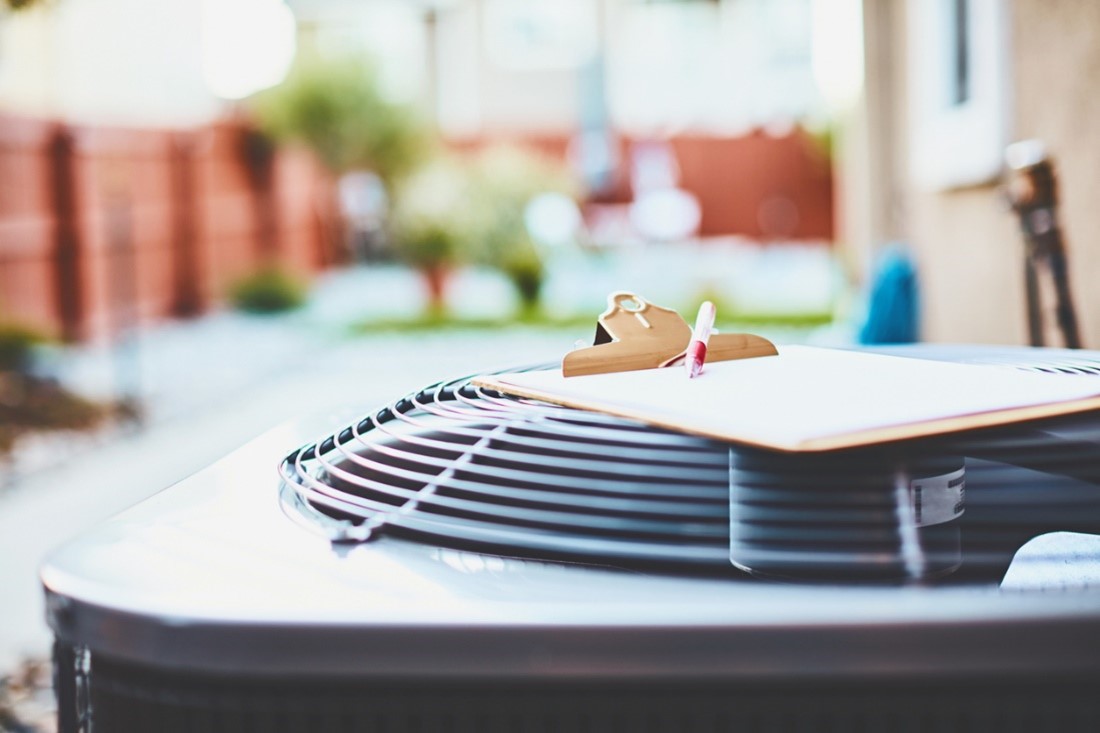Do you know what the components of your HVAC system are and what they do? No, we don’t mean the “thingamabob” or the “whatchamacallit.”
As a homeowner, it’s important to know the correct names of these parts, as well as what they do. It will help you accurately communicate HVAC issues to a technician. In turn, this will help you understand what the technician is explaining.
If you’re familiar with these components, you’ll also be able to determine whether that grinding sound in your system is cause for alarm or just a nuisance.
Here are some of the main HVAC components.
1. Thermostat
The thermostat controls your HVAC system. It senses changes in ambient air and turns your heater or air conditioner on or off until the desired room temperature is reached. If your heater or AC isn’t working properly, the problem could simply be a malfunctioning thermostat.
Some thermostats can be set manually, while others are programmable.
A manual thermostat, or analog thermostat, is a somewhat dated device that you set by turning a dial or moving a small lever. It’s not always accurate, and you may have to repeatedly tweak it to get it to perform properly.
A programmable thermostat is a digital device that’s preset to heat and cool your home on a specific schedule. These thermostats can be programmed for an entire week, and some can be activated via a smartphone or with your voice.
2. Filter
An air filter is a small but crucial part of your HVAC system. All of the air that circulates through your heater or air conditioner passes through the filter before it enters your living space. This keeps dust, debris, allergens, and other contaminants in check.
In order to keep your indoor air clean, you need to periodically change out your air filter. Homeowners with pets or those who have allergies may need to change their filters monthly. Otherwise, your system will struggle to work properly and could break down completely.
This can be prevented because a filter is extremely easy to change, and you can do this yourself.
3. Refrigerant
Refrigerant is a chemical that circulates through your air conditioner and shifts from a gas to a liquid as it siphons and expels heat. Three components of the air conditioning unit are responsible for acting upon the refrigerant to cool your home:
Compressor
The compressor turns the refrigerant liquid into a gas. It literally compresses the refrigerant so that it becomes hot, high-pressure gas.
Condenser
The compressor shuttles the gas to the condenser, which consists of numerous coils. The refrigerant travels over the coils, where its heat is released. It is now a cold liquid, rather than a hot gas.
Evaporator Coil
In the evaporator coil, the refrigerant absorbs heat from your home, and chilled air is blown into it. The refrigerant is then transferred back to the compressor, and the process continues.
4. Ducts
Ducts are passageways that channel and distribute warm or cool air throughout your living space. They’re typically made of aluminum, but can also be made of fiberglass, fiberboard, or flex duct (a wireframe sheathed in plastic). Ducts wind through your attic, garage, ceilings, basement, and walls.
5. Heat Exchanger
A heat exchanger is a component of your furnace that absorbs heat from the combustion chamber. Once this heated air reaches a certain temperature, an electric blower motor kicks on. This motor drives a fan that sends warm air through the registers of each room.
6. Drain Lines
The drain lines, or drainpipes, carry condensation out of the air conditioner. These condensate droplets form when hot air changes into cold air and produces humidity. Drain lines prevent moisture buildup, which can foster mold, mildew, and algae. If they become clogged, they can cause water damage or flooding.
7. Capacitor
The capacitor is a small component inside your HVAC system that delivers a jolt of electricity every time a heating or cooling cycle starts. Like a battery, it keeps storing energy so that it can keep kick-starting the system.
An HVAC system has two types of capacitors:
- Start Capacitor – A start capacitor gets the motor up and running.
- Run Capacitor – A run capacitor keeps the motor running.
8. Vents
HVAC ducts carry air to each room via openings called vents. There are supply vents, or registers, that provide the warm or cold air. There are also return vents, which recirculate the air so it can be cooled or heated again.
Vents can be located on the floor, wall, or ceiling.
Contact Us
When you understand the components of your HVAC system, you can more effectively express concerns or comprehend our technicians’ explanations of maintenance issues. No matter what your expertise level, though, our thoroughly trained, highly ethical technicians will walk you through each repair and answer any and all questions you may have.
Call us today for expert troubleshooting, repair, and installation!

